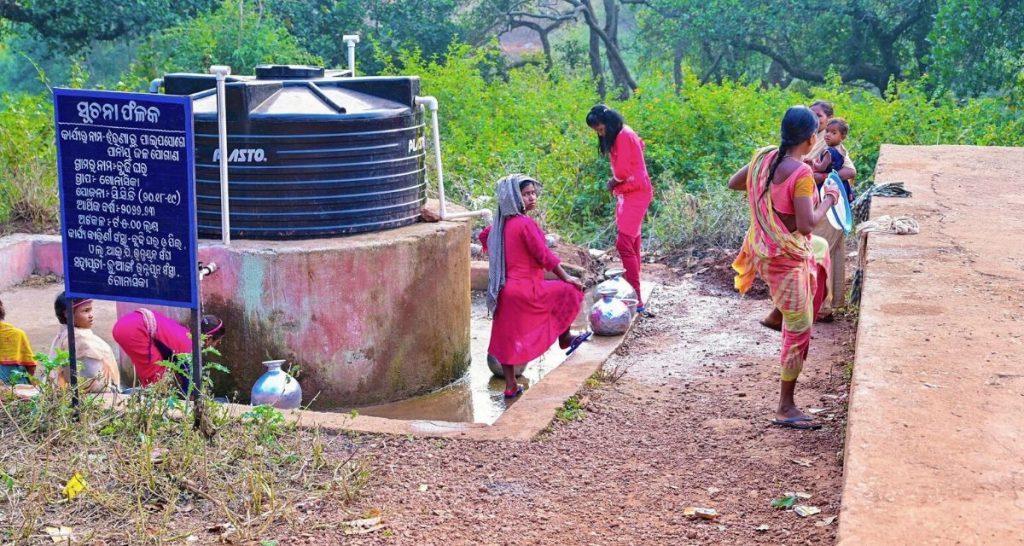Keonjhar: In every sense of the word, Keonjhar district presents a picture of contrast. Once a lush green paradise, it has been turned into a mining hotspot in the last four decades with 64 projects actively dismantling over 1,000 hectare of forests. Similarly, once a quintessential part of the woods, the tribals have been pushed to the fringes and denied access to forest resources.
One of the 13 Particularly Vulnerable Tribal Groups (PVTGs) in Odisha, the Juangs are found in Keonjhar, Dhenkanal, Angul and Jajpur districts. In Keonjhar, they can be spotted in 148 villages in Banspal, Telkoi, Harichandanpur and Ghatagaon blocks.
In Budhighar village of Banspal block, Juangs live on the slopes of Gonasika hills. Their forefathers resided amid dense vegetation, but the Forest department’s entry restrictions after the 1990s forced the present group to settle on the fringes. Their current population is 381 with a total of 84 households. For years, shifting cultivation inside the forest and collection of minor produce were their main sources of livelihood.
Traditionally, they changed their place of stay every 10 years, looking for fertile patches that supported rain-fed agriculture. However, the forest guards on patrol duty do not allow such activities these days. According to the tribals, even women who go to collect minor produce are threatened. They think of the days when they could freely collect tubers, roots, edible leaves, fruits and honey. “Our forefathers roamed every nook and corner of the hills. They were stronger and healthier. However, the present generation is extremely thin and shorter in height,” says an observant Madhu Juang (68). Traditionally, Juangs consumed forest produce and local varieties of millets and pulses. “Cereal-centric food slowly replaced our diverse and nutritious platter. Subsidised rice under the public distribution system eroded the local agro-biodiversity,” claims Jema Juang, the sarpanch of Gonasika panchayat in Bansapal.
“Gongei (sorghum) and mandia (finger millet) were our staple foods. We used to grow at least 32 varieties of traditional crops. They could sustain less rainfall,” recalls Parmeswar Juang. In fact, the crops they cultivated were suitable for the hilly terrain and slopes that they could freely choose from, in the early days.
The present restrictions have contributed to the poor tribal health indices in Keonjhar. Over 25 per cent of women have a below-normal body mass index (BMI) as against the state average of 20.8 per cent, according to the National Family Health Survey-5. Similarly, 74.7 per cent of women in the district are anaemic as against the state average of 61.8 per cent.
To make matters worse for Juangs, the OMC has unearthed the presence of white soapstones (khadi pathara) in Gonasika hills. “Mining has not begun, but sooner or later, it will” says Ratnakar Juang, who holds the position of naik, the messenger of the community.
Though the District Mineral Foundation (DMF) has been initiating development programmes for tribal welfare, several Juang villages do not have access to electricity, potable water, roads or income-generating opportunities. Recent data suggest that Keonjhar’s DMF fund stands at a whopping `8,926.23 crore, possibly the highest such collection from miners in any district of the country.
The district accounts for 26 per cent of the iron ore reserves in the country. It is home to Gandhamardan mines, one of the largest iron ore mines in the state functioning under the Odisha Mining Corporation (OMC). According to a conservative estimate, iron ore worth `5,000 crore has been extracted from here in the last five years.
Snakes lurk in the dark
Groping in the dark is nothing new to Rebati Juang of Budhighar. “Power lines are in a state of disrepair for the last two years. We make do with the solar lamps that the government (Juang Development Agency or JDA to be precise) gave us. Life at night is miserable without sufficient lighting facilities,” she says.
Her husband Baburam adds that the solar lamp will hardly last for three hours. “The households here got only one such lamp. How can our children study after sunset?”
Snakebites are very common in the area, especially in the rainy season. “Due to poor lighting, people unknowingly step on the snakes that enter their houses,” says Dabanda Juang (64). In 2020-21, the district reported 426 snakebite deaths. Across Odisha, snake poisoning kills around 900 people every year. The nearest primary health centre (PHC) for villagers of Budhighar is located eight kilometres away in Gonasika. Sarpanch Jema says the PHC, established in 1965, does not have a permanent doctor even today. “Pharmacists manage the centre. The DMF funds were used to build a medical college and hospital in Keonjhar town, which is far away from our habitats.”
The DMF was not ready to comment on why the hospital was built in the town when tribals were mostly based in remote locations.
IANS

